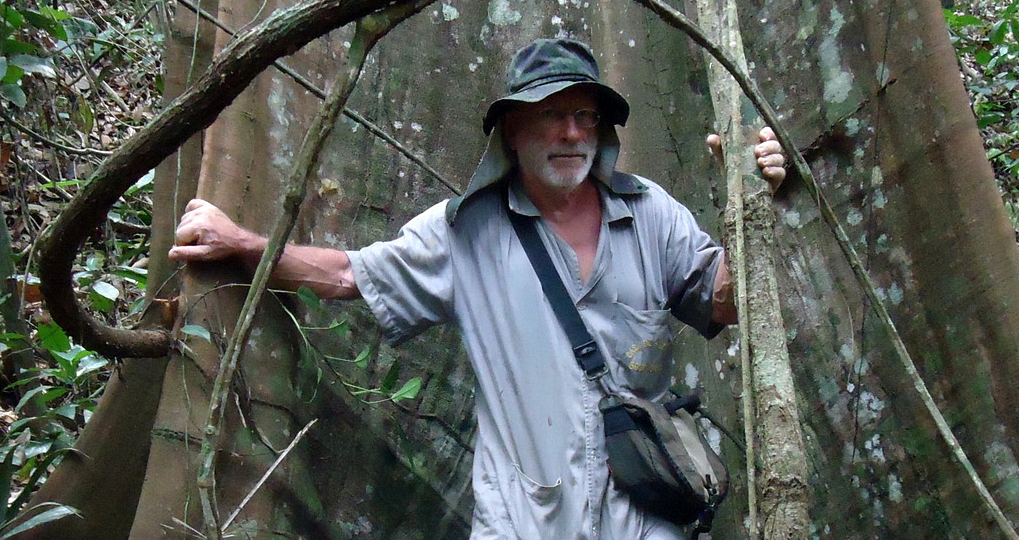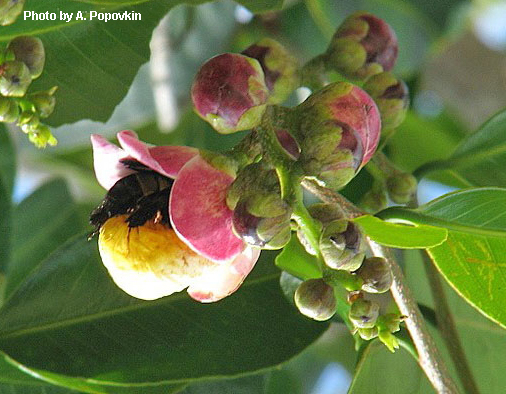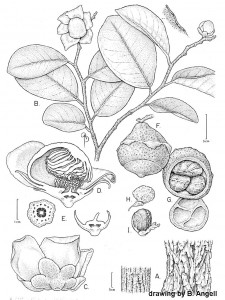Alex Popovkin, Botanist Extraordinaire
Posted in Science on April 25 2013, by Scott Mori
Scott A. Mori is the Nathaniel Lord Britton Curator of Botany at the The New York Botanical Garden. His research interests are the ecology, classification, and conservation of tropical rain forest trees. His most recent book is Tropical Plant Collecting: From the Field to the Internet.

Studying plants in the field is the best way to acquire knowledge about them. Unfortunately, when a specialist does not live where the plants grow, it is difficult to study them in situ. In this modern age, the availability of digital photography and the internet makes it possible for local botanists to collect and photograph plants, then send the data and images to specialists. Although I prefer to see plants in their natural environments, new technology yields information that I could never have collected on my own!
One of my collaborators is Alex Popovkin, a Russian-born editor who works remotely from his small cabin in rural Bahia, Brazil. Alex has been passionate about plants since kindergarten, where he made daily observations of the development of a potted nasturtium planted by his teacher. He also observed the house plants his father cultivated on window sills in their St. Petersburg home. As a high school student in the early ’60s, Alex cared for tropical plants, and among other tasks penciled their Latin names on wooden labels at the Botanic Garden of the University of St. Petersburg as part of his work-study curriculum. His first botany mentor there was Dmitri Zalessky, the garden’s director at the time.

Working as a legal indexer in the old headquarters of Matthew Bender & Co., just across the street from Penn Station in New York City, Alex would spend his lunch breaks at the Public Library on 42nd Street, poring over the 19th century classics of Brazilian botanical literature, such as Flora Brasiliensis. He was especially drawn to the folio-sized plates of the flowers and fruits of plants. It was this last push of inspiration that drove him to realize his childhood dream of living in the tropics, and having made several trips to Brazil in the 1980s, he decided to relocate there permanently. Within a few years of resettling in Brazil, he started making plant observations and capturing their characters, using digital cameras on his daily walks through his property and neighboring areas. His digital collection, counting thousands of images of both plants and animals, is available on Flickr.
I first met Alex after he emailed me, asking for help in identifying a common local plant. I recalled seeing fruit of the species in question some 25 years earlier, when I worked for the Herbarium of the Cocoa Research Center (CEPEC) in southern Bahia, Brazil, but had never figured out what it was; I concluded that it was a species new to science and reported that decision to him. With my encouragement, Alex worked over the next year to collect leaves, flowers, fruits, and seeds of that species. Soon after, my colleague, Nate Smith (a former employee of the NYBG now living in Brazil) visited Alex and was able to observe the species in the field. Based on Alex’s collections and observations, Nate wrote the draft of a paper in which the three of us intended to publish the “new species.” Bobbi Angell prepared a beautiful illustration of the plant.

The publication was on the verge of proving an embarrassing mistake which was only avoided when, while visiting the Herbarium of the Royal Botanic Gardens Kew, I discovered a specimen that served as the type for Chrytroma ibiriba Miers. Unfortunately, we realized that the species already had a name that had been placed in a different genus. Rather than abandon the work, we saw an opportunity to publish a paper about a new combination in which we moved the name to Lecythis. The new name for the species is Lecythis ibiriba (Miers) N. P. Sm., S. A. Mori & Popovkin. In botany, the authors’ names are standardized and follow the name of the species. Thus, Miers is still recognized as the person who first published the species, and Nate, Alex, and I are given credit for placing it in the correct genus.
It is likely that the work on this species would not have been undertaken if not for Alex’s initial field work and email queries. On my suggestion, Alex started a serious collecting program of the local flora, one of the species-rich hot spots of the Atlantic forest biome and a still inadequately collected area on the northern littoral of Bahia, Brazil. His collection of vouchered specimens (more than 1,400 at the moment) is deposited in the Herbarium of the State University at Feira de Santana (HUEFS). In cooperation with Brazilian and American botanists, he has recently published three papers in peer-reviewed journals and has several more projects on newly discovered species in the works.
Alex has not only helped many botanists solve problems with the species they study, but his images allow the entire world to appreciate the beauty of the plants he observes in the field.

